
How to Use DS18B20: Examples, Pinouts, and Specs
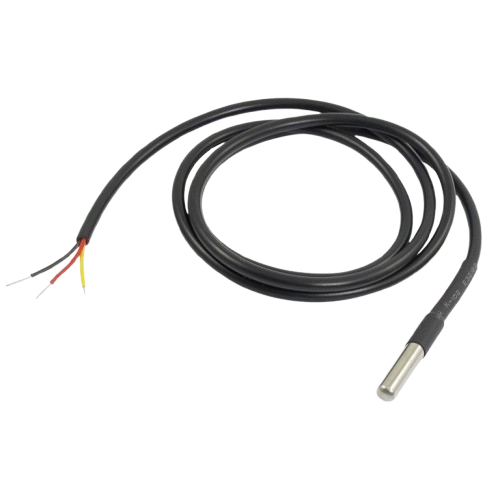
 Design with DS18B20 in Cirkit Designer
Design with DS18B20 in Cirkit DesignerIntroduction
The DS18B20 is a digital temperature sensor that communicates over a 1-Wire interface, requiring only one data line (and ground) for communication. It provides accurate temperature readings in the range of -55°C to +125°C with a user-selectable resolution of 9 to 12 bits. The sensor is widely used in applications such as weather stations, home automation systems, industrial temperature monitoring, and HVAC systems due to its simplicity, reliability, and precision.
Key features of the DS18B20 include:
- Wide temperature range: -55°C to +125°C
- High accuracy: ±0.5°C in the range of -10°C to +85°C
- 1-Wire interface for easy communication
- Ability to connect multiple sensors on the same data line
- Programmable resolution (9 to 12 bits)
Explore Projects Built with DS18B20
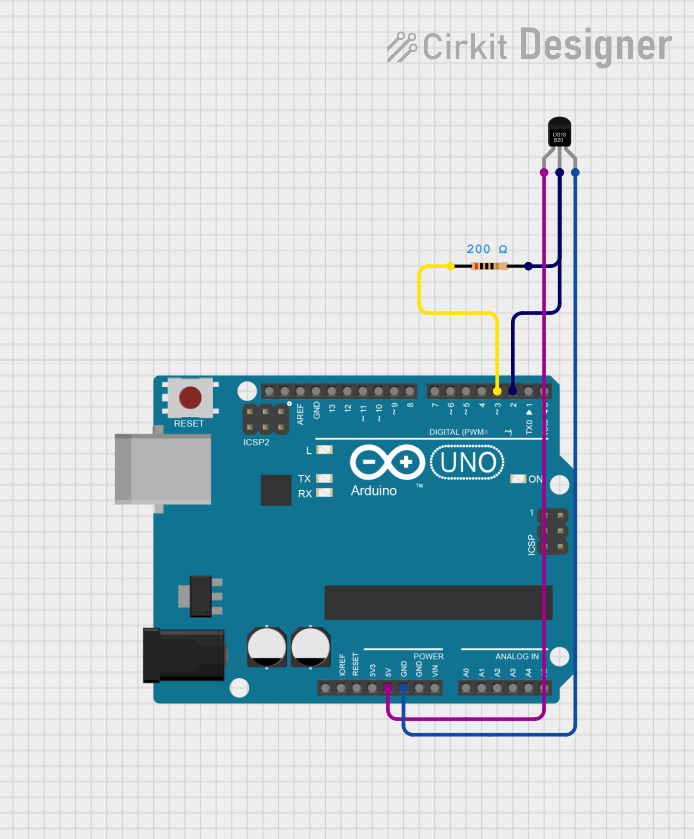
 Open Project in Cirkit Designer
Open Project in Cirkit Designer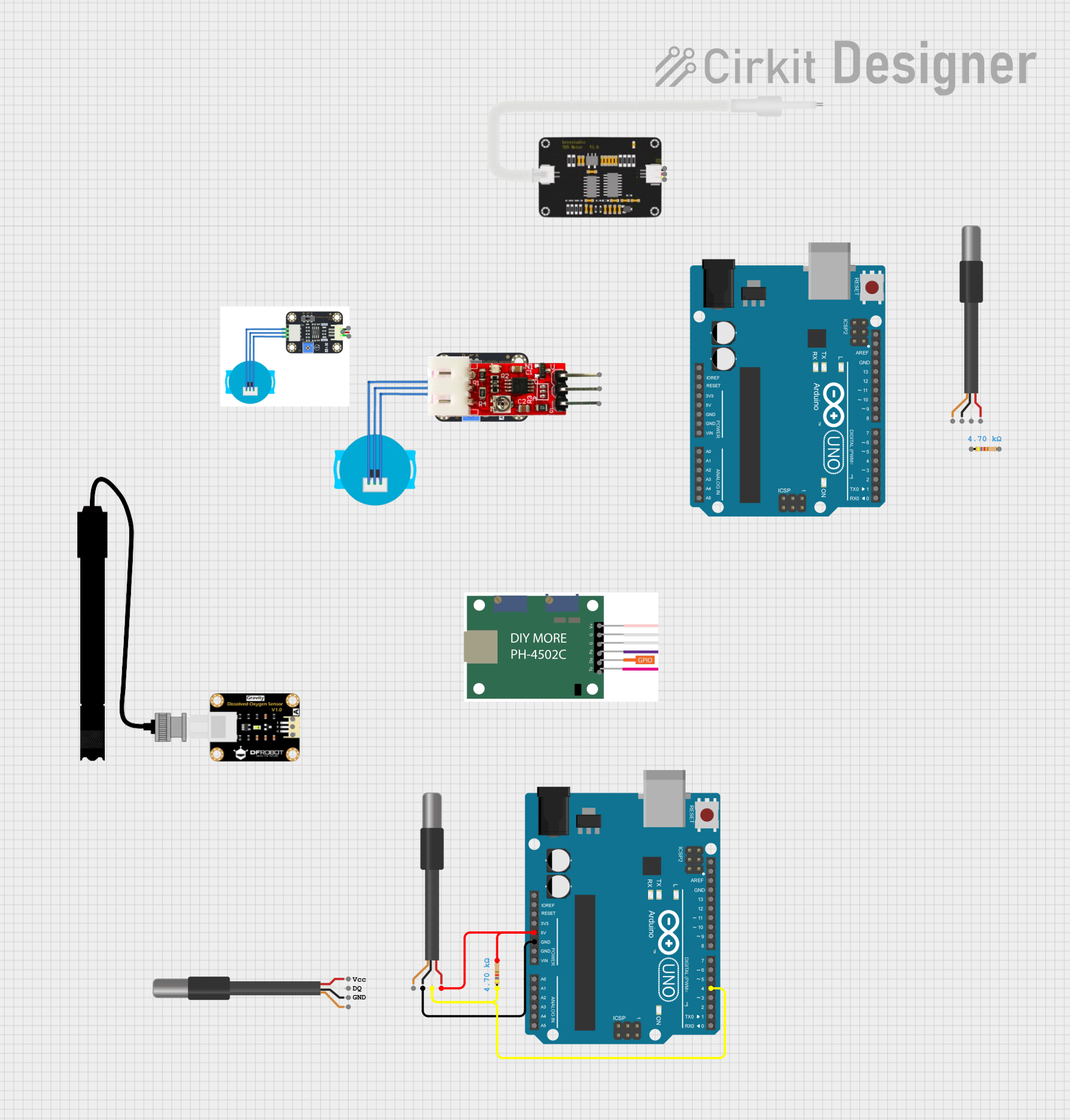
 Open Project in Cirkit Designer
Open Project in Cirkit Designer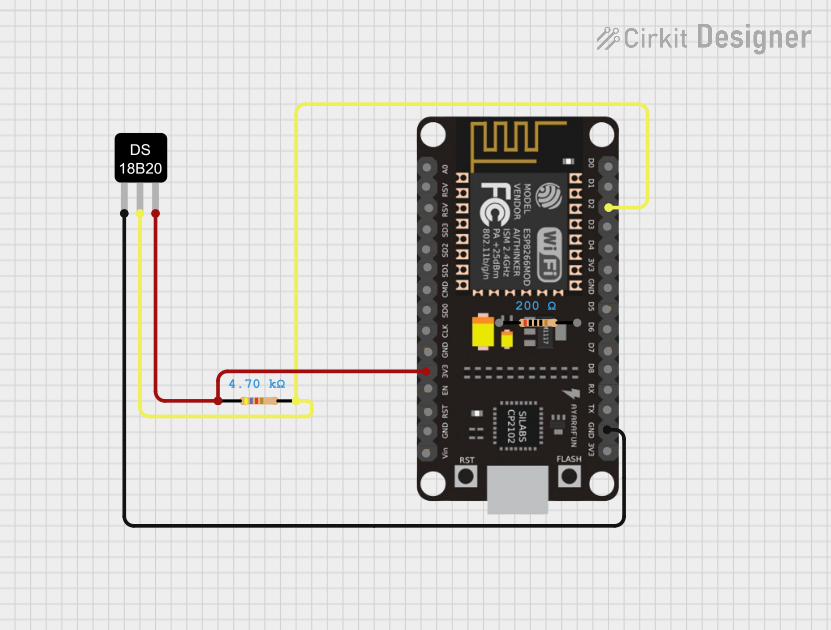
 Open Project in Cirkit Designer
Open Project in Cirkit Designer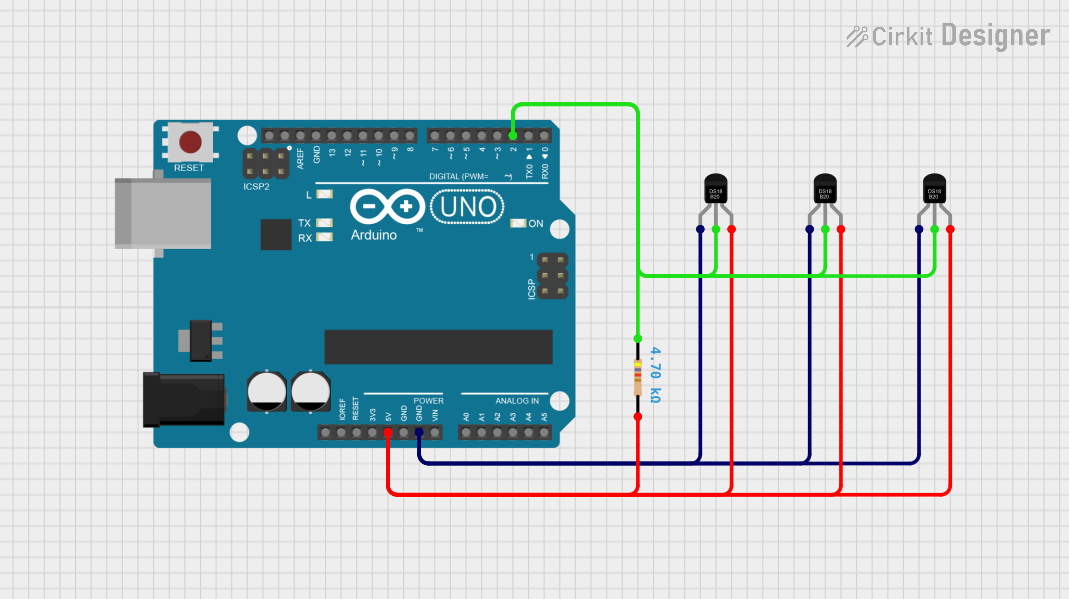
 Open Project in Cirkit Designer
Open Project in Cirkit DesignerExplore Projects Built with DS18B20

 Open Project in Cirkit Designer
Open Project in Cirkit Designer
 Open Project in Cirkit Designer
Open Project in Cirkit Designer
 Open Project in Cirkit Designer
Open Project in Cirkit Designer
 Open Project in Cirkit Designer
Open Project in Cirkit DesignerTechnical Specifications
Key Technical Details
| Parameter | Value |
|---|---|
| Temperature Range | -55°C to +125°C |
| Accuracy | ±0.5°C (-10°C to +85°C) |
| Resolution | 9 to 12 bits (programmable) |
| Supply Voltage | 3.0V to 5.5V |
| Communication Protocol | 1-Wire |
| Max Current Consumption | 1.5 mA during conversion |
| Standby Current | 750 nA (typical) |
| Conversion Time | 93.75 ms (9-bit) to 750 ms (12-bit) |
| Unique 64-bit ROM Code | Yes |
Pin Configuration and Descriptions
The DS18B20 is typically available in a 3-pin TO-92 package. The pinout is as follows:
| Pin Number | Name | Description |
|---|---|---|
| 1 | GND | Ground |
| 2 | DQ | Data line for 1-Wire communication (requires a pull-up resistor) |
| 3 | VDD | Power supply (optional for parasitic power mode) |
Note: The DS18B20 can operate in "parasitic power mode," where it draws power directly from the data line (DQ) and does not require a connection to the VDD pin.
Usage Instructions
How to Use the DS18B20 in a Circuit
Wiring the Sensor:
- Connect the GND pin to the ground of your circuit.
- Connect the DQ pin to a digital I/O pin of your microcontroller (e.g., Arduino) and add a 4.7 kΩ pull-up resistor between DQ and the power supply (VDD).
- Connect the VDD pin to a 3.3V or 5V power supply. If using parasitic power mode, leave the VDD pin unconnected.
Programming the Sensor:
- Use a microcontroller (e.g., Arduino UNO) to communicate with the DS18B20 via the 1-Wire protocol.
- Install the necessary libraries, such as the "OneWire" and "DallasTemperature" libraries for Arduino.
Reading Temperature:
- Initialize the sensor in your code.
- Request temperature readings and process the data.
Arduino Example Code
Below is an example of how to use the DS18B20 with an Arduino UNO:
#include <OneWire.h>
#include <DallasTemperature.h>
// Pin connected to the DS18B20 data line
#define ONE_WIRE_BUS 2
// Create a OneWire instance to communicate with the sensor
OneWire oneWire(ONE_WIRE_BUS);
// Pass the OneWire instance to the DallasTemperature library
DallasTemperature sensors(&oneWire);
void setup() {
Serial.begin(9600); // Start serial communication
sensors.begin(); // Initialize the DS18B20 sensor
Serial.println("DS18B20 Temperature Sensor Example");
}
void loop() {
sensors.requestTemperatures(); // Request temperature readings
float temperatureC = sensors.getTempCByIndex(0); // Get temperature in Celsius
if (temperatureC != DEVICE_DISCONNECTED_C) {
Serial.print("Temperature: ");
Serial.print(temperatureC);
Serial.println(" °C");
} else {
Serial.println("Error: Sensor not found!");
}
delay(1000); // Wait 1 second before the next reading
}
Important Considerations and Best Practices
- Use a 4.7 kΩ pull-up resistor on the DQ line to ensure proper communication.
- Avoid long wires to minimize signal degradation, especially in noisy environments.
- If using multiple DS18B20 sensors on the same data line, ensure each sensor's unique 64-bit ROM code is used to address them individually.
- For higher accuracy, use a stable power supply and avoid rapid temperature changes.
Troubleshooting and FAQs
Common Issues and Solutions
Sensor Not Detected:
- Ensure the wiring is correct and the pull-up resistor is properly connected.
- Verify that the data pin is connected to the correct microcontroller pin.
Incorrect Temperature Readings:
- Check for loose connections or poor soldering.
- Ensure the sensor is not exposed to temperatures outside its operating range.
Multiple Sensors on the Same Bus Not Working:
- Verify that each sensor's unique ROM code is used in the code.
- Ensure the pull-up resistor is strong enough to handle the total bus capacitance.
Parasitic Power Mode Issues:
- Ensure the DQ line is held high during temperature conversion.
- Avoid using parasitic power mode in high-noise environments.
FAQs
Q: Can I use the DS18B20 with a 3.3V microcontroller?
A: Yes, the DS18B20 operates with a supply voltage range of 3.0V to 5.5V, making it compatible with 3.3V systems.
Q: How many DS18B20 sensors can I connect to a single data line?
A: Theoretically, you can connect up to 100 sensors on the same 1-Wire bus, but practical limitations such as wire length and capacitance may reduce this number.
Q: What is the default resolution of the DS18B20?
A: The default resolution is 12 bits, but it can be configured to 9, 10, or 11 bits for faster conversion times.
Q: Can the DS18B20 measure negative temperatures?
A: Yes, the DS18B20 can measure temperatures as low as -55°C. Negative temperatures are represented in two's complement format.
Q: Is the DS18B20 waterproof?
A: The standard DS18B20 is not waterproof, but waterproof versions are available in sealed stainless steel tubes for outdoor or liquid temperature measurements.